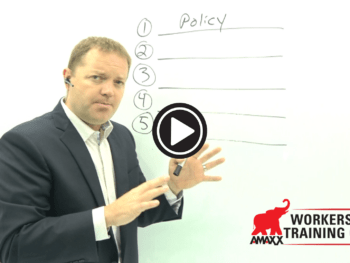A few years ago one of the nation’s largest Third Party Administrators (TPA) found itself in a quandary. Every year, for several years, there was a small decline in total revenue. While a decline in revenue in one year could be blamed on the business atmosphere, a decline in revenue year after year was causing major concern in the business world. The company stock of the TPA sank. The major insurance brokers the TPA relied on for business were not including this TPA when they needed TPAs to bid on new claim business.
Something had to be done. The TPA hired one of the leading consulting companies in the insurance market to provide some guidance. The consulting company did their study. They interviewed employees, they interviewed clients, they studied the data and they did market research. Four months and many, many dollars later, the consulting company came to the same conclusion most of the TPA’s middle management knew . . . only 68% of the TPA’s clients were satisfied with the quality of service being received on their claims.
Click Link to Access Free PDF Download
Some of the quality issues that were identified included:
- Communications and responsiveness of the adjusters.
- A need to retain knowledgeable, well-trained adjusters, i.e., too much turnover.
- Timely and accurate data.
- Timely reporting of claims status.
- A failure to keep the clients informed.
- Too many billing issues.
- Wide variation in the quality of service among branch offices.
These are the same issues faced by many TPAs and insurance carriers.
It was not enough to say “these are your quality problems.” The TPA’s quality problems need correction and the quality improvements needed measuring in order to quantify the results. Three broad objectives were established.
- The TPA would create a new monthly operations report that quantified branch performance in terms of quality,
- Incorporate these measures into staff incentive programs for managers, supervisors, adjusters and other employees, and
- Use these measurements to identify performance deficiencies in order to implement corrective action plans.
To measure the success of the quality initiatives, the TPA decided to use three criteria,
- Marked improvement against the benchmarks they established to measure the quality of their performance,
- A reduction in the rate of employee turnover, and
- A positive change to their financial performance.
These were good criteria for the TPA to measure itself by, but the question became “How?” The following steps were taken:
- A creation of their own “Best Practices” as to what to do on every claim.
- Measure the quality of the claim files frequently, both subjectively and objectively.
- Offsetting quality indicators were established to achieve checks and balances in the measurement process.
- Measure management performance on both financial results and the improvement of quality against the benchmarks established.
- Expand branch performance measurements to include quality indicators.
All of the above ways of improving quality were beneficial, but the main reason quality began to improve at the TPA was they were providing financial incentives for quality at all levels of the operation — Regional, Branch, Supervisor and Adjuster.
The Quality Assurance (QA) Department moved from obscurity within the TPA to the forefront of the TPA’s operation. To accomplish these goals, the QA established diagnostic measurements that could be taken from the data already produced by their computer system including:
- Workers compensation medical bill turnaround time
- Average days between reserve changes
- Closed file payments in excess of $1,000 aggregate
- Closed file payments as a % of total payments
- Data errors
- Reserve worksheet completion compliance
- Reserve to ultimate value comparison
- Index filing compliance
- Diary usage
- Claim file notes usage
- Average claim cost comparison
- Closings (average per full time employee)
FREE DOWNLOAD: “5 Critical Metrics To Measure Workers’ Comp Success”
Established an on-line auditing system to review a sampling of every adjuster’s files each month to measure:
- Initial contacts timeliness
- On-going contacts
- Initial investigation completion
- First reports to clients
- Status reports to clients
- Compiled the results of the diagnostic measurements and on-line auditing into a monthly quality comparative operations report.
- Ensured the distribution of the monthly quality operations report to all parties.
- Published quarterly and annual compilations of the improvements against the established benchmarks.
- Assisted the Regional Managers in identifying and correcting quality deficiencies.
- Assisted the Regional Managers in identifying and rewarding quality achievers.
- Assisted senior management in establishing and refining the quality measurement process.
By identifying the quality issues they were facing, the TPA was able to establish quality benchmarks to measure. By measuring the quality goals and rewarding the employees whose performance improved, the TPA was able to turn the performance of the entire company around and increase client retention to 95%.
Author Rebecca Shafer, J.D. President, Amaxx Risks Solutions, Inc. has worked successfully for 20 years with many industries to reduce Workers’ Compensation costs, including airlines, healthcare, printing/publishing, pharmaceuticals, retail, hospitality and manufacturing. Contact: RShafer@ReduceYourWorkersComp.com or 860-553-6604.
WC Books: http://www.reduceyourworkerscomp.com/workers-comp-books-manuals.php
WC Calculator: http://www.reduceyourworkerscomp.com/calculator.php
Do not use this information without independent verification. All state laws vary. You should consult with your insurance broker or agent about workers’ comp issues.
©2010 Amaxx Risk Solutions, Inc. All rights reserved under International Copyright Law.
FREE DOWNLOAD: “5 Critical Metrics To Measure Workers’ Comp Success”








